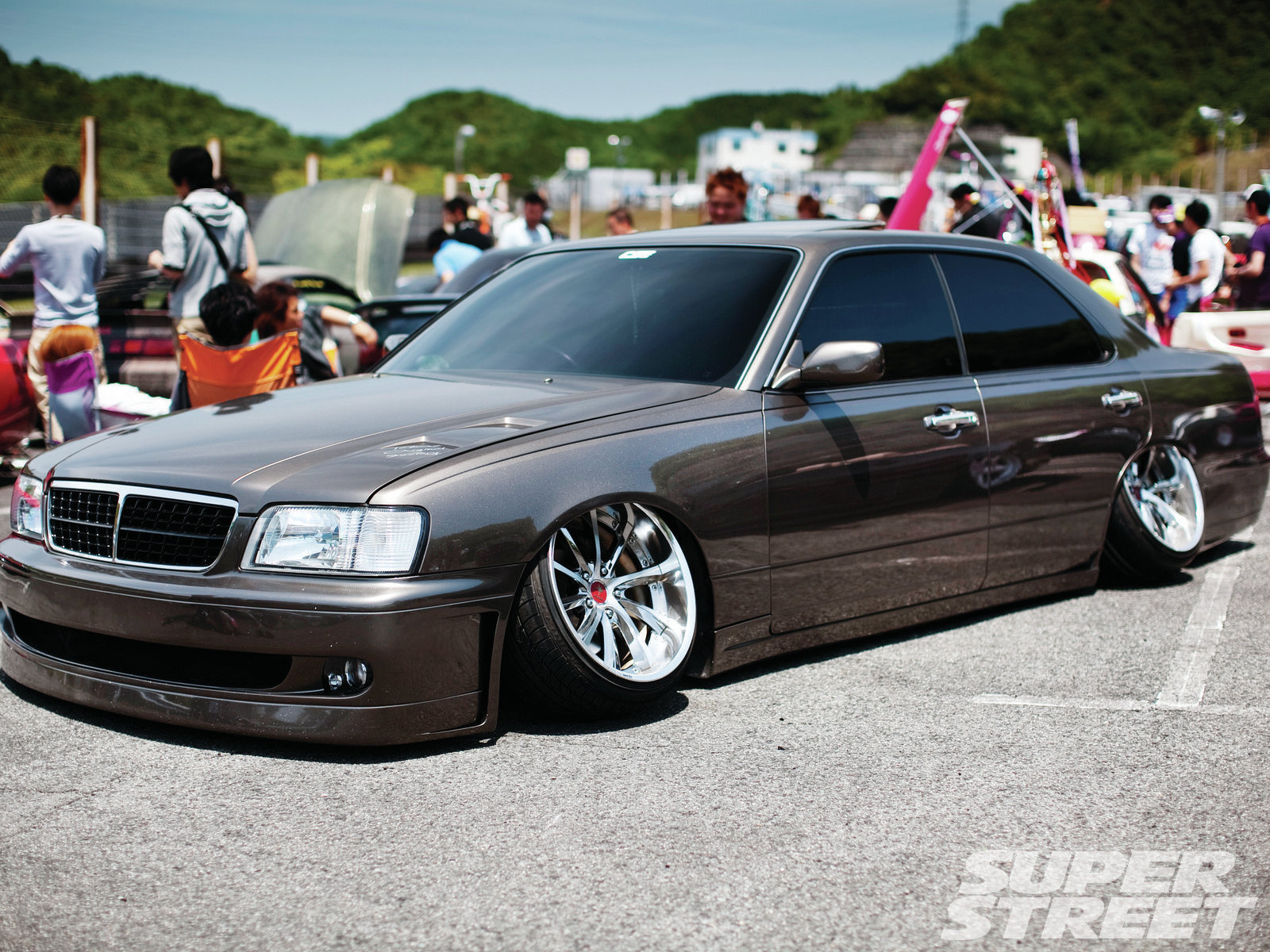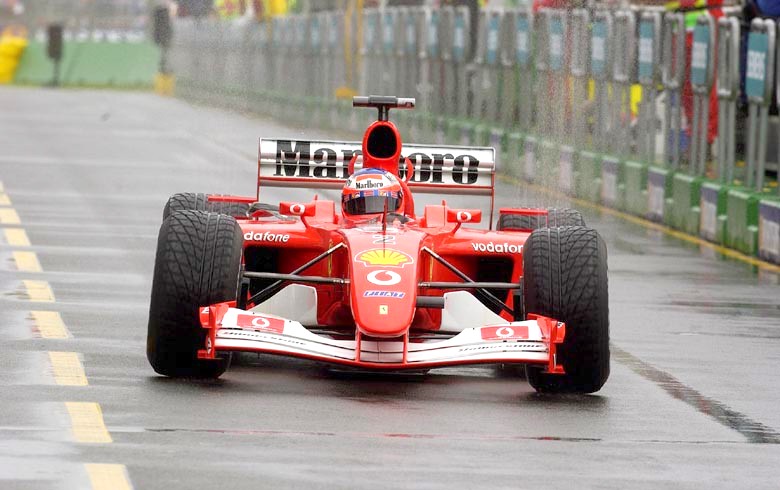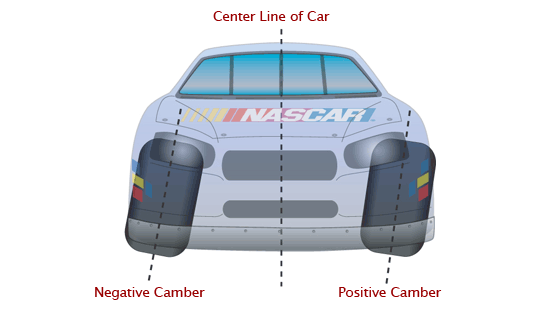I've seen photographs of cars with strange inclined tires like the one in the picture I pasted here. They seems to be Japanese cars. Is it for drifting? Maybe for appearance? Do the tires get injuries?

-
3Where we're going, we don't need roads! zooms off into the clouds– NickCommented Mar 26, 2014 at 14:33
-
11Because people are stupid.– Captain KenpachiCommented Apr 24, 2015 at 7:15
-
I used to see this regularly decades ago on modified original VW Beetles. I assumed it was because lower those cars any other way was very difficult, but I could be wrong. I didn't see it on any other cars until much later when bosozoku/ricers came to be a thing(s?)– hippietrailCommented Sep 16, 2016 at 10:53
5 Answers
In this specific example the car is more than likely using airbags. When you decrease or increase the height of a car it affects the tire alignment by usually causing positive camber, pushing the top of the tires outward, this is a highly modified suspension system.
This particular person has modified their suspension so the top of the tires tuck in when the airbags deflate so they don't hit the fender well. Which not possible with a dual wishbone configuration, so more than likely its a basic strut assembly.
Most people will adjust their cars for negative camber, this way during hard cornering when the tire deforms on the vertical axis you get the largest amount of rubber on the road. Most tuners overdo this past performance and into the realm of looking good.
-
3
-
That's the beauty of car culture, we have so many definition of what "good" is and what each sub culture enjoys. See jalopnik.com/5651022/…– ChrisCommented Feb 21, 2018 at 16:22
The tilt of the wheel is known as the camber angle. Tilting the wheel in that manner is called negative camber. Doing it the other way around (top outwards) is positive camber.
Mounting the wheel with a negative camber improves grip under hard cornering as it counteracts rolling. On a completely level tire (0 camber), when a horizontal force is applied to the rubber, it rolls, causing the inner edge of the contact patch on the outer wheel (and the outer edge on the inner wheel) to lift, reducing the size of the contact patch, and subsequently grip. By tilting the tire inwards, this is counteracted, but at the cost of a reduced contact patch when driving in a straight line. It's a tradeoff and requires careful modelling and testing to determine the optimal camber angle for a given vehicle.
Some F1 cars utilize variable camber systems, allowing the camber angle to be adjusted on the fly, giving ~0 camber on the straights and proper amounts (again, determined by careful modelling and testing) of positive/negative camber when turning.
That extreme amount of camber on the car you showed is purely stylistic and would be horrible for both tire wear and handling, but lesser amounts of camber are common. For example, the negative camber angle is plainly visible on the wheels of this Ferrari F1 car.

If you're only turning in one direction (i.e. oval racing), you can further optimize by applying both positive and negative camber to the inner and outer wheels respectively, countering the rolling on both wheels, giving you maximum grip when cornering. This is pretty much seen in NASCAR.

-
+1 for showing how F1 cars (presumably the cars that would need the most extreme camber angle) apply the technique, thus illustrating just how excessive it is when done much more than this as a "cosmetic" modification. Commented Sep 19, 2020 at 16:14
The question assumes that the car is a drivable configuration, which may not be true. This car and similar photos you have seen probably have Height adjustable suspension this allows the ride height of the car to be changed on demand.
In all likelihood the frame of the car pictured is sitting on the ground. The suspension has been lowered (or tires raised) through a powered operator controlled method, until the tires are no longer supporting the car. There are several variables, but as you can see in the question image, the tires on the vehicle will not clear the body panels without being tipped in for the current ride height.
Alternatively @Freiheit has a good explanation also. A search for images on Google finds some images of vehicles that appear to be moving with similar extreme camber.
It is entirely for style.
This is called "camber".
The tires will wear in an odd manner. The tire contact with the road is usually a rectangle on the bottom of the tire. This extreme camber makes the contact patch very small and near the inside edge of the tire. This does significantly reduce grip.
-
Perhaps in the photograph it's entirely for style but I've ran two or three degrees of negative camber on tarmac racecars as it significantly improves grip available at turn-in when the car weights up. Reason is the action of the car turning, for example, right pushes weight over the left. This pushes the tyre flat onto the road surface providing maximum grip in a hard cornering scenario. Commented Sep 16, 2016 at 11:50
As @Compro01 said, a few degrees of camber helps cornering. Too much camber places all of the weight on a small section of the tire, making it wear out faster and reducing grip when you're driving in a straight line. Racecars can get away with that because the tires only need to last for one race.
The photo in the question is definitely a case of too much camber. That car is going to be undrivable in that configuration. If you drive like this, the sidewalls will come in contact with the road surface. The sidewalls aren't designed for this and the tire will fail soon. You also need gigantic tire pressure to avoid the rims hitting the tarmac.
Especially in Japanese car culture, some drivers employ really exaggerated modifications: front spoilers 50 cm long, tailpipes sticking out 2 m beyond the rear bumper, and 45° of camber.
In some cars (e.g. with swing axles as used on the VW Beetle), when you lower the suspension you automatically/inevitably get increased camber. With live axles and modern independent suspension this is much less pronounced. With double wishbone suspension it doesn't happen at all.
